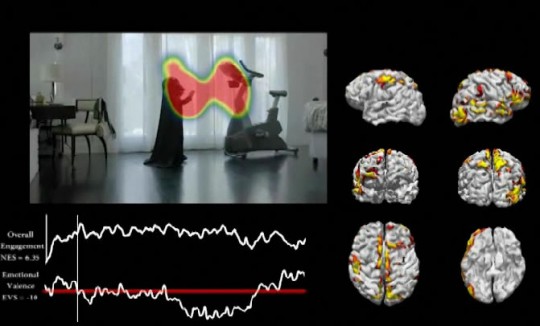7 Ways to Engage Your Customer’s Reptilian Brain

Grab this info-packed “reptilian brain” post as a PDF! We made it easy – Download by clicking HERE!
In creating marketing material for your brand or product, you probably aren’t thinking about your customer’s lizard brain. Rather, you may be asking, “What drives a customer to buy?” and “What initially draws their attention?”
According to SalesBrain and the Triune Brain theory, the reptilian region is the brain’s attention gatekeeper and decision maker. If you can grab the attention of a consumer’s reptilian brain with your landing page, advertisement, or commercial, you’ve got a much better chance of guiding them to conversion.
Fortunately, there are specific techniques you can use to make your value proposition communicate directly to this region and give you the edge in engaging your audience from the start.
Although the Triune Brain theory is sometimes controversial as experts argue about it’s accuracy – see this earlier Neuromarketing post, the theory provides a helpful, simplified view of how the brain reacts to stimuli.
Furthermore, Daniel Kahneman, recipient of the 2002 Nobel prize in economics, brilliantly demonstrates the role of the reptilian brain. In Thinking Fast and Slow, Kahneman describes two systems in the Brain: System 1 (Reptilian + Middle brain) and System 2 (NeoCortex). Then, Kahneman methodically and scientifically establishes that “System 1 still rules”.
7 Ways to Engage Your Customer's Reptilian Brain pic.twitter.com/S4h5YL1Q9y Share on XWhat is the Reptilian Brain?
There are three sections to the brain: The outer, the middle, and the reptilian.
The youngest part of the brain is the outer layer. It is responsible for such things as processing the written language, complex thinking, calculating, and rationalizing your decision.
The middle section of the brain processes emotional responses. It gives you a gut feeling on your decision.
The oldest part of the brain is the reptilian area. It is responsible for instinct and survival. Its main focus is to avoid pain. This area is what makes our decisions.
It takes a lot of energy to run the brain. It’s 2% of our body mass, but it burns 20% of our energy. Our brain is optimized to conserve energy. Hence, it is not going to waste expensive energy by involving other brain regions to process things if that isn’t necessarily for survival.
If you can prove you are worthy of attention, then and only then, will the other parts of the brain to get involved.
How To Reach The Reptilian Brain With Your Value Proposition
You don’t necessarily need to threaten your audience’s immediate survival to grab their attention (although that will work).
There are specific marketing techniques you can use for captivation.
These include: tapping into your audience’s pain points, appeal to their innate selfishness, demonstrate importance through contrast, emphasize value tangibility, focus on beginning and end, use a visual metaphor, and strike an emotional chord.
We’ll go over these in more detail below, with specific examples of each.
Speak To The Pain Of Your Audience
The reptilian brain is more concerned with avoiding pain as a means of survival, than it is with gaining pleasure. As a result, talking about the direct benefits of your product will not immediately grab people at first.
What you can do: Tap into exactly what the pain point is of your consumer. Then, in your value proposition, make sure that you have incorporated how you plan to alleviate that pain.
Christophe Morin of SalesBrain provides a great example with Domino’s Pizza. They knew that their consumer’s true pain was not in the fact that they didn’t have pizza. The real pain was in not knowing when the pizza would arrive. By focusing their efforts on addressing this pain with an online ordering system that tells you exactly when your pizza is in the oven and on it’s way, they increased sales exponentially.
Uber knows that it is a consumer pain point to have to schedule and wait for rides. They make sure to tell you that you can get a ride on-demand and it’s easy to schedule with an app. You can also see that this woman is happy with the fact that she has a ride.
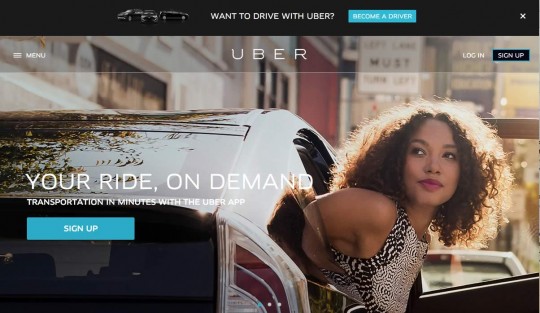
It’s painful for many men to make the time to go out shopping. Manpacks speaks to this by sending necessary supplies directly to their doors. You also see an image of the end result you are hoping for; a man who has his supplies and can just focus on getting ready for his day.
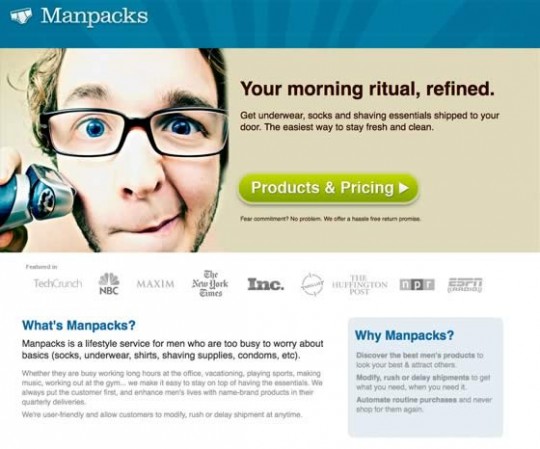
The host of this site, Roger Dooley, uses this strategy too. As one of the small number of customer experience keynote speakers who base their insights on neuroscience and behavior, one of the first questions he asks prospective clients is, “What are the pain points of your audience?” Finding out what people are worried about or frustrated by helps Roger craft a more impactful speech.
Appeal To the Reptilian Brain’s Self-Centered Nature
Since it is strictly responsible for its own survival, the consumer’s reptilian brain will be more likely to be attentive if you’re talking about its favorite subject: itself.
Within seconds, the reptilian brain wants to know what you plan to do for it. Make sure to make this extremely apparent in your proposition or the consumer will not be interested.
What you can do: Use words like, “You” and provide pictures from the consumer’s perspective.
This advertisement shows a hungry child from the consumer’s perspective. This makes it feel more real and is more likely to elicit some action on their part.

The American Disability Association helps to place you in the shoes of those who find it difficult to climb stairs so that you’ll be more supportive of building additional handicap facilities.

This advertisement is speaking directly to you, helping you to hold yourself accountable for your actions that affect the environment.
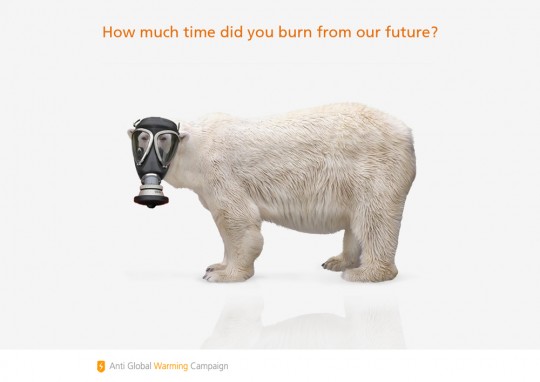
Demonstrate Importance to the Reptilian Brain Through Contrast
Contrast is understood by the reptilian brain extremely easily. Easily understood messages will be more likely to be rewarded with attention. It will also speed up the decision making process.
What you can do: Show contrast by demonstrating before and after; show the pain and relief from the pain. Show why you are better than your competitors and why your message is significant. Use words like “We are the only” and “We are the best” in your messaging so that you stand out.
Apple demonstrates contrast between itself and its competitor in this advertisement. Mac looks confident and put together. The PC looks unhealthy in its hospital gown, and its posture is slouched, indicating lower confidence.

Ultra Vision is showing you that it’s contact lenses will take you from blurred vision (the consumer’s pain) to crystal clear (alleviation from pain), with the possibility of even hitting a target. It’s also demonstrating this from your perspective, tapping into the consumer’s self-centered nature.

Pepsi is demonstrating that it is so much better than its competitor that the straw can’t even stand to go near anything else.
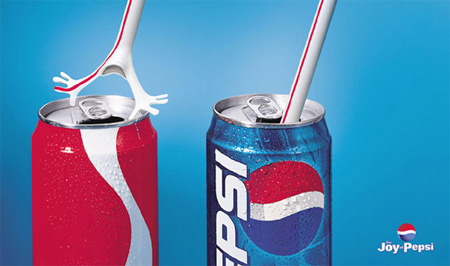
DigitalDay is showing you how much more powerful it is than its competitors.
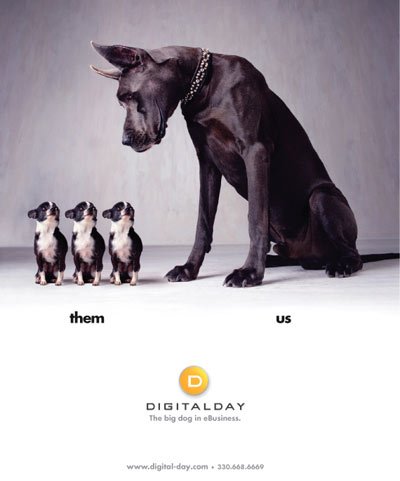
Show Value Tangibility
The reptilian brain only understands a few words at most. The optic nerve goes directly to the reptilian brain, and so it is primarily influenced by visual images. Since the reptilian area is the rest of the brain’s attention gate-keeper, this means you’ve got to be creative with how you communicate in order to persuade the reptilian portion to invest the rest of the brain’s energy on you.
What you can do: Use simple and short sentences if you need to use words. Focus on imagery that demonstrates the value you are proposing in a way that feels real, concrete, and/or familiar.
Assume that your consumer will be skeptical in your claims, and that you need to prove it to them by providing evidence. Help the consumer to visualize what you are trying to say and prove it to them.
Show the customer that there will be more value than cost. If you are communicating about your product in person or on camera to the consumer, use props wherever you can to help them visualize what you are saying.
Customer testimonials are a great source of proof. It shows the reptilian brain, which can only perceive the present, what has happened in the past. It is more likely to trust your claim of the future if you have proof of what has already happened.
Show a quick demonstration of your product. Help them to see how they could use your product to alleviate pain in some way or multiple ways.
Data can sometimes be helpful, though it’s important to make your data visual to immediately grab attention. The reptilian brain is not responsible for calculations and so you’ve got to show it what you are trying to say.
This disturbing (some say tasteless) ad for the World Wildlife Federation is showing you a powerful visual representation of data: the Tsunami killed 100 times more people than 9/11.

You can also visually demonstrate a vision of the future you will be able to provide for the consumer.
In Patrick Renvoise’s presentation, he gave the great example of this lawyer’s advertisement.

In case if you didn’t believe Heinz when it said that its ketchup is hot, here’s a tangible experience that will help you to understand exactly how hot it is.

The Endangered Wildlife Trust shows you physical evidence of what happens when you don’t pick up your trash.

Grab this info-packed post as a PDF! We made it easy – Download by clicking HERE!
Don’t Strive for Impact in the Middle: Focus on the Beginning and End
Since the reptilian brain’s main focus is survival, it will be incredibly alert when a change occurs in order to evaluate danger. To conserve energy, it will direct attention in the beginning and the end of your commercial, video or landing page.
This means that the middle portion will be far less likely to draw attention.
What you can do: Express the most important information at the beginning and repeat it at the end. Create mini segments to provide structure and to tell the reptilian brain that something new is coming and it doesn’t need to tune out. Segments will also help the brain with memory retention.
Amy Poehler stars in this Best Buy Commercial. Their value proposition is that they have many experts waiting to help you find the right product for you. In the opening scene, a Best Buy representative asks Amy if he can answer any questions. Amy immediately jumps on the opportunity and takes you through different scenes of her asking many questions on a variety of products. At the end, Amy asks one last question that she probably should not be asking a Best Buy representative. This commercial makes it obvious that no matter what your questions are or how many you may have, Best Buy is there to help.
This is a great Volkswagen commercial. (Neuromarketing firm Sands Research found it to be the best Super Bowl ad of all the ones they tested – see Darth Vader Wins Super Bowl.) It captivates attention in the opening scene with original Star Wars Music and a child wearing a Darth Vader costume. You then see segments of the child performing various attempts at using the force to move objects in his house. Finally, at the end, the dad pulls up in his Volkswagen Passat, and the child makes a last attempt at using the force to affect the car. The dad then uses his remote car starter to start the car and make the child think that the force was at work. It implies that you can feel powerful too by starting your Volkswagen with your remote control starter.
The “emotional valence” levels recorded by Sands (lower graph) demonstrate this arc from beginning to end:
In this commercial, The Dick’s Sporting Goods Foundation for saving youth sports grabs you at the beginning by showing you why you care about the main character; his grandfather just died. There are a few segments within the commercial, demonstrating how the boy is coping with his loss, his coach pushing him to have a positive perspective, and at the end it shows that he feels supported by his team. The ending drives home that fact that kids are looking to sports for support, strength, and belonging and that youth sports deserve to be protected.
Visual Metaphors for the Reptilian Brain
We mentioned earlier that the optic nerve connects directly to the reptilian brain, which is why visual input has a strong effect.
This is a survival mechanism. Your reptilian brain will register that there is a bear in the distance before other areas of your brain can process that information. This allows for split second reaction if needed.
As a result, by showing a visual representation of what you plan to deliver, you are helping the consumer to understand what you are saying without having to involve the other areas of the brain.
Since we know that the reptilian brain guards the rest of the brain’s attention, this is a powerful move on your part.
What you can do: Provide a visual metaphor for what you are offering and why it’s the best. Don’t make it too complicated, or it will require other brain regions. Make it as simple as possible.
Diet Pepsi knows that its audience feels overweight. Here’s a great visual metaphor where an elephant is feeling as light as air. It implies that if you drink diet pepsi, you will also feel this way.
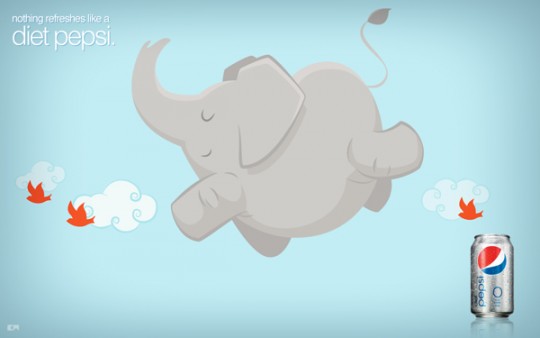
The National Resources Defense Council used a great gun metaphor in their public service announcement. Air pollution kills 60,000 people a year and by continuing this pollution, you are using a loaded gun.

Crisisrelief.org would like you to see the visual metaphor of the fact that liking something on social media does not actually make any real affect on those who need help. They want you to volunteer and help make an impact.

This image also pulls on your heart strings as well, which leads us to our next category.
Strike An Emotional Chord
What drives our decision making is mostly subconscious since it does not involve the cognitive parts of the brain initially. This means that it’s common for consumers to not know why they want certain things, or to be out of touch with what specifically causes them pain.
To help bring the pain point into awareness and drive the action you are intending, trigger the emotional pain point of consumer. Triggering positive emotions can also be effective, though the reptilian brain is more drawn to negative emotion.
What you can do: Visual images that tell an emotional story can be powerful since story helps the consumer to understand how your information applies to them. Video is even more effective because it engages both the auditory and visual senses, which will enhance attention and memory.
The World Wildlife Federation successfully created an image that conveys the blood of these animals is on your hands if you are buying exotic animal souvenirs.

In this commercial, Guinness triggers a strong emotional response, stating that we all have differences and handicaps in some way. What unifies us is the decisions we make and implies that beer can unify us as well.
Michelin strikes a chord with its consumers by bringing to awareness the fact that their child depends on them to make decisions that will provide the best protection since they are completely helpless on their own.
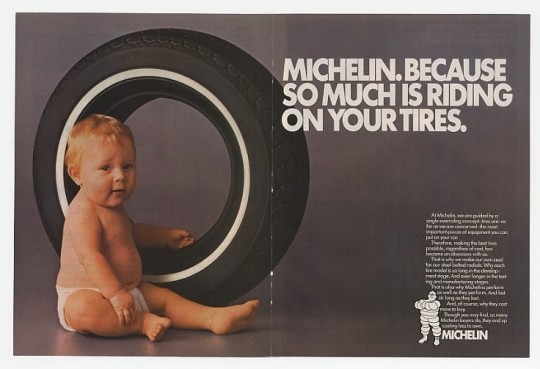
Master The Art of Reptilian Communication
The entire brain plays a role in the consumer decision process, however, the reptilian brain is the power behind the scene. You must work to appeal to this area first in order to effectively influence your audience.
Sell More by Mastering the Art of Reptilian Communication. pic.twitter.com/S4h5YL1Q9y Share on XSpeak the language of the reptilian brain by tapping into what causes
your audience pain and presenting your value proposition in the
ways that are easily understood by this brain region.
SalesBrain suggests that by perfecting the art of reptilian communication, you too will increase sales and improve your ability to positively affect YOUR customers again and again….
Now did that reach your self-centered reptilian brain?
Grab this info-packed post as a PDF! We made it easy – Download by clicking HERE!
This article was written with the permission of SalesBrain, and contains copyrighted information which shouldn’t be reproduced translated or adapted without the express written permission of SalesBrain. Article copyright 2015 Roger Dooley, all rights reserved.

